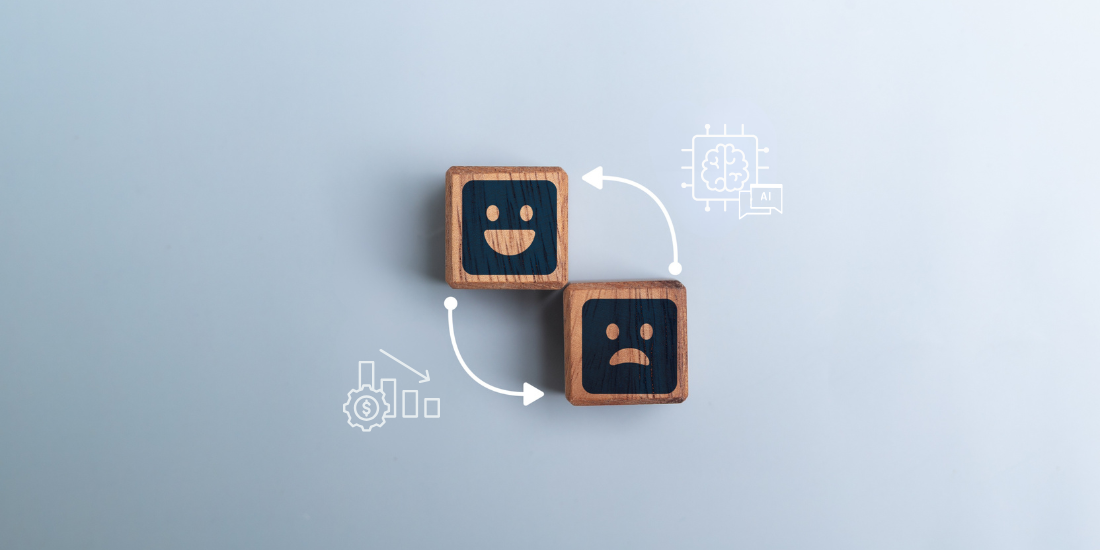Join our mailing list
Receive exclusive updates on the latest CX trends, events,
and solutions.
Anticipate customer needs and steer interactions toward the best outcome, not just the next channel

Every customer interaction carries a cost, but the most expensive ones are the ones that never should have happened.
Journey orchestration uses AI and real-time data to anticipate customer needs and guide them to resolution before they have to switch channels or repeat themselves. That proactive design reduces escalations, shortens handle time, and keeps CX costs under control.
Without orchestration, brands risk paying for both the automated interaction and the human resolution. With it, they can connect customer intent to the right resource or self-service path from the start.
At TTEC Digital, we see orchestration as the connective tissue between AI, CRM, and human support. It’s real-time decisioning that aligns customer intent with business outcomes. And attention paid to it consistently results in lower CX costs, faster resolution, and higher customer satisfaction.
Customer journey orchestration is the real-time coordination of customer interactions across channels, systems, and teams based on context, intent, and business goals. It’s not just about routing; it’s about designing and executing journeys that feel seamless to the customer and efficient to the business.
Done right, customer journey orchestration anticipates customer needs based on data, context, and previous behavior — so brands can proactively offer solutions before customers even initiate contact.
“Maximizing satisfaction with customer journeys has the potential not only to increase customer satisfaction by 20% but also lift revenue up by 15% while lowering the cost of serving customers by as much as 20%.”
– McKinsey, The Three Cs of Customer Satisfaction
By orchestrating journeys end-to-end, brands reduce friction, avoid unnecessary escalations, and optimize resource use, cutting CX costs while improving satisfaction.
Consider the math: AI bots can handle a simple customer interaction for a fraction of the cost of a live agent, often in the $0.50–$0.70 range per interaction. But when that interaction fails and escalates to a human agent, costs can climb dramatically, often exceeding the $7.16per call average depending on industry and complexity. Multiply that across thousands of interactions a day, and the savings from getting orchestration right add up fast.
Not all customers respond to bots the same way. Some are perfectly happy never talking to a human. Others… not so much.
Where one customer might breeze through a password reset bot in two minutes, another could spend five minutes arguing with the bot before demanding a human, then tying up that agent for 20 minutes. Each failed deflection compounds cost; a single human-handled escalation can cost up to 10xwhat a successful automated interaction does. In this way, context matters. As does knowing your audience. Smart orchestration helps determine whogets the bot and who gets a person.
When the TTEC Digital CX strategy& design team models orchestration for clients, they base it on behavioral signals, sentiment, and journey history, not only channel preference. This ensures that automation is helpful, not an annoying hinderance on the path to getting “real” help.
By applying this kind of intelligent routing, brands reduce unnecessary escalations, optimize staffing, and deliver more personalized, cost-effective experiences.
Not every part of the journey is suited for AI, and that’s intentional. The goal is incremental improvement, because trying to automate every step can create more problems than it solves.
At TTEC Digital, we treat AI as a scalpel, not a sledgehammer: precise, contextual, and always in service of the customer journey. We focus on embedding AI where it adds real value to both the customer and the team. Here are the touchpoints where we’ve seen the biggest impact lately:
By focusing AI where it can truly help, brands improve efficiency, reduce unnecessary agent effort, and avoid frustrating customers with inappropriate automation.
Identifying where AI can help starts with your customer relationship management (CRM) platform. Platforms like Salesforce, Dynamics 365, and ServiceNow store rich customer data: past interactions, support tickets, purchase history, and preferences. This data lets brands identify:
If CRM data is the raw material, orchestration is the engine that turns it into personalized, efficient customer experiences.
Begin orchestration in high-impact areas like customer service or sales. Map the journey, identify escalation points, and set routing rules that factor in context and complexity.
Quick wins include sending complex issues to humans and letting bots handle simpler cases. This helps show measurable CX cost savings early, while maintaining (or even improving) the customer experience.
When determining where to introduce AI, consider three factors: frequency, complexity, and sentiment. High-frequency, low-complexity, and low-sentiment interactions — like billing updates or password resets — are ideal for automation. But when emotions run high, such as during an insurance claim or healthcare issue, human empathy matters more than speed. Proper orchestration balances all three to deliver efficient yet compassionate service.
The fatal mistake is assuming that high-volume interactions are always good candidates for automation. They’re not. Once high-frequency interactions are identified, use complexity and sentiment to determine the right level of automation. To prove your results, track cost per interaction, first-contact resolution, and customer satisfaction scores. These metrics confirm that cost reductions don’t come at the expense of experience.

While you’re measuring, consider reviewing your overall customer journey orchestration maturity with each change. That means assessing how well journeys are connected, personalized, and optimized. This helps you set abaseline from which to evolve, from reactive routing to proactive engagementacross your entire organization.
The most expensive CX isn’t necessarily the one with the highest tech spend; it’s the one that fails to connect. Journey orchestration ensures every interaction is intentional, efficient, and empathetic.
To cut costs without cutting care, start with your highest-friction journeys. The ones were bounce rates soar, customer sentiment turns sour or carts end up in a graveyard. Those are the moments where orchestration can turn breakdowns into breakthroughs.
{{cta-block-1}}
Our customer journey orchestration maturity model offers tips to help you move from reactive routing to proactive engagement, one touchpoint at a time.

Mike is passionate about guiding companies in navigating the digital landscape, focusing on digital strategy alignment, conversational AI, and humanizing customer experiences through team empowerment.